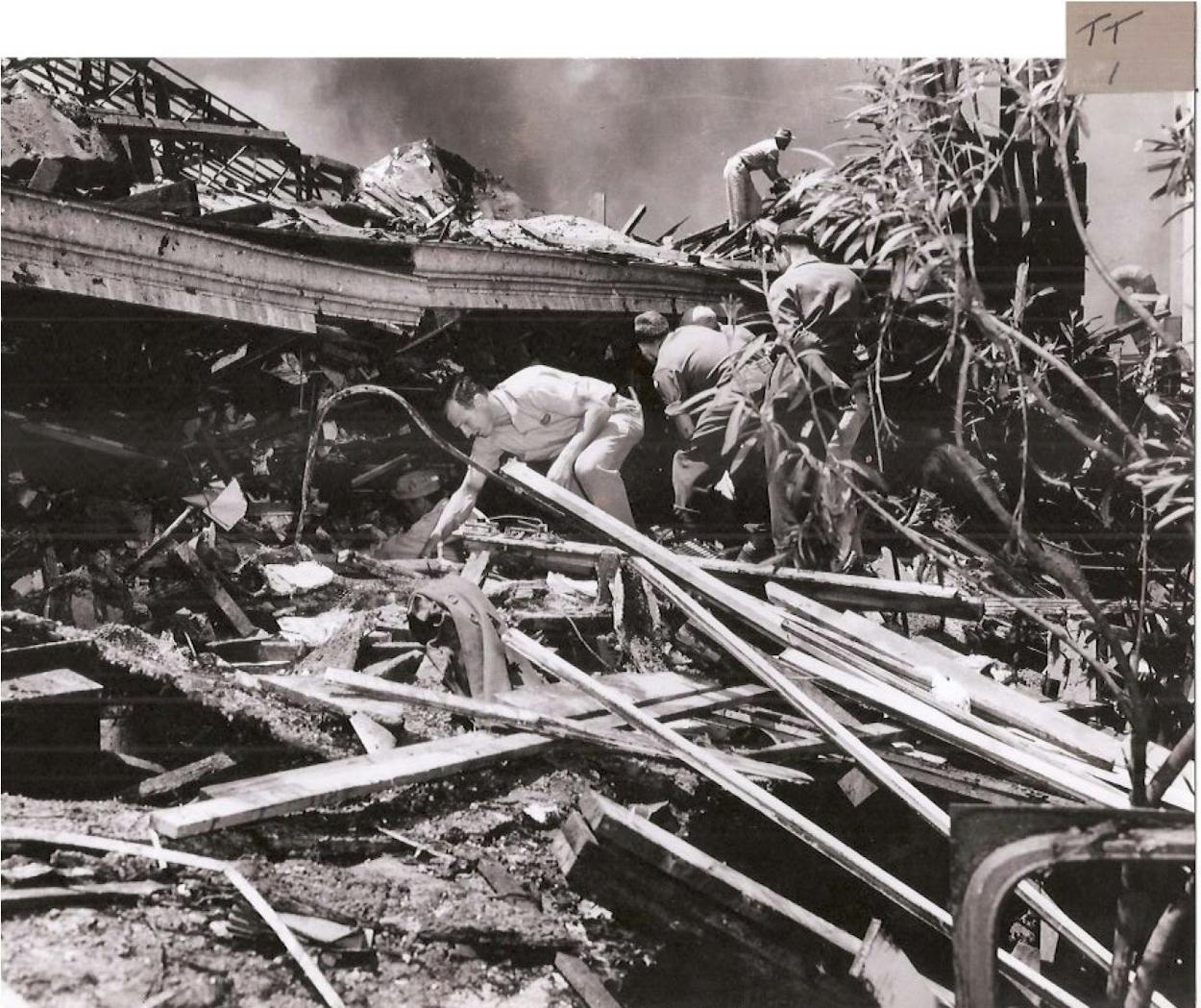Filmmaker Jay Thames was six years old when his grandfather first told him about the Texas City disaster. He was too young to completely grasp the magnitude of the event, but he’d never seen his grandfather Jesse, a World War II veteran and local businessman, get so emotional. In many ways, Thames has been turning that story into a script ever since, drawing out the details from Jesse little by little. Years of this research will finally come together in Thames’s upcoming film, Texas City.
The morning of April 16, 1947, the S.S. Grandcamp was docked in Texas City when a fire broke out on the freighter’s deck. As onlookers crowded the shoreline to get a closer look, the flames spread to the ship’s cargo—2,200 tons of ammonium nitrate—and caused it to explode with a blast powerful enough to be felt 250 miles away in Louisiana. The first blast ignited ammonium nitrate aboard the nearby S.S. High Flyer, and fifteen hours later the vessel explosion, sending shrapnel flying toward the town.
There is no official death toll, but it’s estimated that between 500 and 600 people died and thousands were injured, making it the deadliest industrial disaster in American history. The explosions would bring sweeping changes to the regulation and safety standards for the transport of chemicals like ammonium nitrate, as well as hundreds of lawsuits and an eventual $17 million payout from the U.S. government. Yet many Texans have never heard about the disaster. “You’d think [with the losses] that it’d be round-the-clock news, but it wasn’t,” Thames says. “In a lot of places, it was never even reported.”
Texas City, which is still in pre-production, tells the true story of Jesse’s immediate response to the explosion. As tragedy engulfed the town, he turned the family home into a makeshift medical center and rescued people from the wreckage. Jay’s dad, John, was almost four when he felt the explosion send shockwaves through his home, but he remembers the day vividly. He says their house, located less than two miles from the docks, was the only one in the area to survive the blast.
Jesse later joined a team identifying the dead. “They’d find a hand with a ring on it and identify a loved one that way,” John says. “He was in World War II, but he said this was the worst thing he’d ever been though.” John’s aunt and uncle came to take the family to their house in Houston, where many other surviving families would start their new lives. “There was a stream of people on both sides of the road walking out of town to Houston,” John says. “It looked like a refugee line. A lot of people just left their homes.”
When Renee Blake, a realtor in Granbury, found a long-forgotten folder of documents and photos from the litigation following the explosions, she wanted to make sure it got into the right hands. A month later, she stumbled upon Thames’s Facebook page for the film, where survivors were sharing their stories. Thames has been sharing Blake’s photographs on Facebook, where many people, including survivors, are seeing them for the first time. He hopes to gather some of their stories in a collection of videos to play during the closing credits of the film.
In a way, Thames’s project is an acknowledgement of an event that seems to have faded into history. Sylvia Smith, who was a third grader on the day of the blasts, saw a flash of bright light from the second floor of her elementary school. She felt the floor rise up beneath her and was temporarily deafened by the sound of the explosion. She didn’t even notice a piece of glass had lodged itself in her right eye until her father pulled it out with a pair of pliers. After the community rebuilt, Smith says people never talked about what had happened. “The first time I ever really saw people talk about it was on the website about the movie. I’d never, ever heard any of those stories,” Smith says. “It was so horrific, what happened, that everybody just wanted to get on with living a peaceful life in a small town.”
Thames, a 46-year-old Houston native, says that his production company is close to choosing a director and that he hopes to begin filming this fall. “You have all these different components that have been in other disaster movies — fire, water, explosions, toxic chemicals — but it is all in one event, and it’s all real,” Thames says. “But the most important reason [to make the movie] was that there were so many people who passed away who have never really been honored.”
Thames says this is what makes him sure that the Texas City story will resonate with people across the state and beyond. “It reminds people that we can overcome great challenges or great tragedies and be better,” he says. “That’s what Texas City is really about.”






